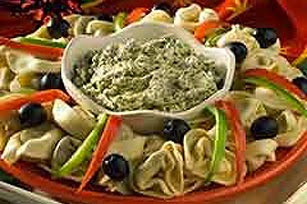Pollinators
Watching and working alongside the bees is a joy. Each year I look forward to my time with them in the garden and flower bed. As they buzz from flower to flower we work in unison; each of us creating beauty and bounty. It would be not only heartbreaking, but detrimental to our food source, if they were to become extinct.
WE CAN’T LIVE WITHOUT THEM:
Pollination is essential to ecological survival. The human race and all of earth’s terrestrial ecosystems would not survive without pollinators. Of the 1,400 crop plants grown around the world that produce all of our food and plant-based industrial products, almost 80% require pollination by animals. When bees and other pollinators visit, the result is larger, more flavorful fruits and higher crop yields.
WHO ARE THE POLLINATORS?
Although birds, bats, and other creatures are also pollinators, insects do the bulk of the pollination that affects our daily lives. The familiar pollinators are bees and butterflies, but you might be surprised by some of the others such as flies, wasps, and beetles.
Bumble bees are important pollinators of wild flowering plants and agricultural crops. Because they can fly in cooler temperatures and lower light levels than other bees, it makes them excellent pollinators, especially at higher elevations and latitudes. They are essential pollinators and the loss of bumble bees can have far-ranging ecological consequences.
Honey bees may be the most well-known, but they represent a tiny fraction of all bee species. There are an estimated 20,000 species of bees worldwide, and approximately 3,600 bee species are native to the United States and Canada alone.
Butterflies and moths are valuable pollinators, supporting the health of ecosystems and agriculture. Like many other insect species, butterflies and moths in the U.S. are experiencing significant declines: 19% are at risk of extinction, including the iconic Monarch butterfly.
Wasps have wrongfully been given a reputation for being aggressive. Although they are minor pollinators, they are adept hunters that we wouldn’t want to live without. They do us all a great service in keeping insect populations in balance and managing pests.
With over eighty-five thousand species worldwide, flies form one of the most diverse orders of insects. While a number of these species are branded as crop pests and carriers of disease, many are beneficial. The aquatic midges serve as an abundant food source for migratory birds, while the fly is a pollinator of apples, peppers, mangoes and cashews.
Beetles are the most diverse group of organisms in the world and are quite different in color, shape, and ecological role. Fossil records suggest that beetles, along with flies, were probably the first insect pollinators of prehistoric flowering plants, and are still pollinators of many flowers such as magnolias and water lilies.
WHERE DO THEY WINTER?
Non-migrating bees, butterflies, beetles and other pollinators need cover to protect them from harsh winters. They survive by using natural shelters:
- Hollow canes and dead flower stalks of perennials are secret winter homes for butterfly species in the caterpillar and egg stages.
- Leaves on the ground provide insulated hideaways for many pollinator species, including the wooly bear caterpillar (the larva of the Isabella tiger moth).
- Dense vegetation hides chrysalises of butterflies like the swallowtail, whose chrysalis is camouflaged to look like a leaf or twig.
- Old wood and bark are used by some of our native bees, including leafcutter and mason bees, as well as butterflies overwintering in the adult stage and by the caterpillars of species overwintering in a pupal form.
- Undisturbed soil is the year-round home of many wild bees, who may be solitary or live in small colonies.
From the iconic monarch butterfly to lesser-known butterflies, many species that were once common are now threatened due to factors ranging from habitat loss to climate change.
Conservation efforts led to the protection of the rusty patched bumble bee, the first bee to be listed as endangered in the continental U.S. Biologists are working to inform on the conservation of all of the North American bumble bee species, and provide tools to manage their habitats to protect, sustain and rebuild their populations.
There are more than 3,600 bee species native to the U.S. and Canada. While less is known about their conservation statuses, it is likely that many of these species are also vulnerable to extinction.
WHAT CAN WE DO TO PROTECT AND SAVE POLLINATORS?
It is clear that pollinators are in trouble. As they move from plant to plant in search of pollen or nectar to eat, they are dusted by pollen and move it to the next flower, fertilizing the plant and allowing it to reproduce and form seeds, berries, fruits and other plant foods. These form the foundation of the food chain for other species—including humans.
A few things we can do to help:
- When panting, plant native - native plants co-evolved with the native wildlife of your region.
- Gives bees nesting places - offer such nesting spots by leaving tree snags on your property, by leaving bare batches of sandy soil.
- Avoid pesticides – make a commitment to avoid using chemicals in your garden.
- Plant milkweed - Without milkweed, monarchs can’t complete their lifecycle and populations plummet. By planting milkweed in your own yard, garden or neighborhood, you’ll not only attract these beautiful butterflies, you’ll be providing crucial habitat that will allow their caterpillars to survive.
- Protect grasslands - America’s native grasslands are critically important for pollinators such as bees and monarch butterflies. Our grasslands are filled with native plants that offer nectar and pollen for bees, butterflies, hummingbirds and a wide variety of pollinators.
And…last, but not least, spread the word. Make others aware of how important these pollinators are, and what they can do to protect them.




Comments
Post a Comment